Last Updated on March 24, 2025 by Jeffrey Calderon
40 Alarming Construction Safety Statistics For 2025
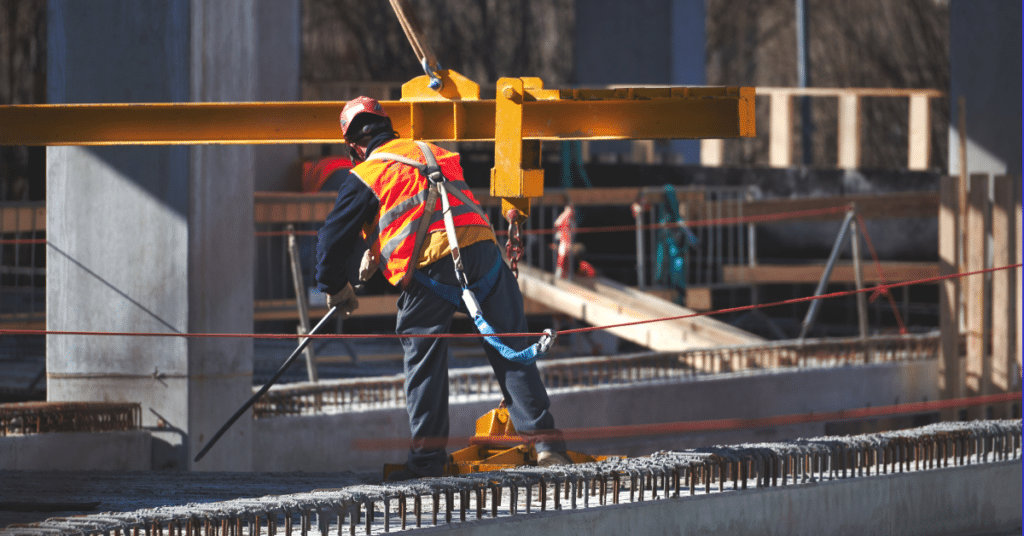
Ever wondered what’s going on with construction safety in 2024?
While many assume strict regulations keep construction sites accident-free, the reality painted by the numbers might surprise you.
Brace yourself for a real-world dive into the frighteningly alarming statistics shaping construction sites across the United States.
In this article, we’ve gathered 40 construction safety statistics for 2024 that will make you pause for concern.
These statistics shed light on the dangers construction workers face daily, the evolving industry trends, and the critical importance of safety measures.
Whether you’re a construction professional, a safety advocate, or simply someone interested in the well-being of workers, this information will spark your desire to create safer worksites and save lives.
Read on as we delve into these 40 critical statistics, and together, let’s take action to make the construction industry a safer place for everyone involved.
Overview of Construction Safety
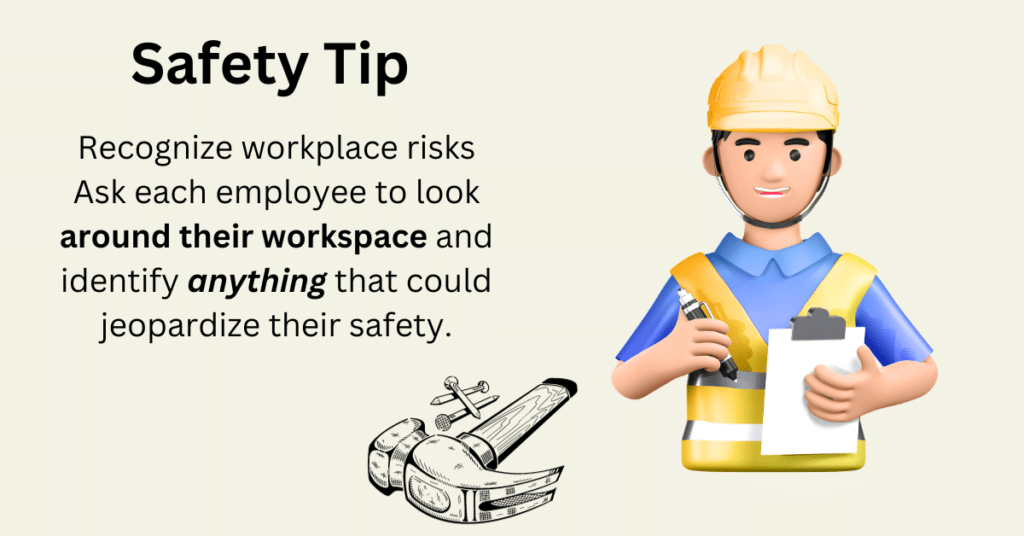
Understanding the numbers is as crucial as laying a solid foundation in the construction game.
So, let’s take a closer look at the vital statistics that define Construction Safety.
From injury rates to the sobering reality of accidents, these numbers tell a story that every contractor needs to heed.
It’s not just about pouring concrete and hammering nails. It’s about knowing the risks and keeping our teams secure.
So, buckle up for a statistical journey through the landscape of Construction Safety – where the numbers shape the narrative, and safety isn’t just a goal; it’s a measurable commitment.
1. There were 1,008 deaths in the construction industry in 2021
Source: BLS.com
2. There were 1,176,340 workers injuries in 2020
Source: BLS.com/news/archives
3. 2021-2022 saw a 10% rise in construction fatalities from 986 to 1,008
Source: LHSFNA
Leading Causes of Accidents
In the high-stakes game of construction, our industry grapples with what we call the “The Fatal Four” – a set of unsettling statistics that sheds light on the gravest dangers our workers face.
These figures highlight the most frequent and severe incidents that tragically cut short the lives of contractors.
Falls, struck-by incidents, electrocutions, and caught-in/between accidents form this deadly quartet, serving as stark reminders of the inherent risks within our job sites.
As we navigate these unsettling statistics, it’s 100% clear that we must intensify our commitment to safety protocols and maintain an unwavering focus on vigilance.
The Fatal Four demands our attention and an unwavering dedication to creating safer environments for every member of our construction family.
4. There were 370 Falls from heights in 2021
Source: US Department of Labor
5. There were 152 electrical accidents in 2021
Source: BLS.com
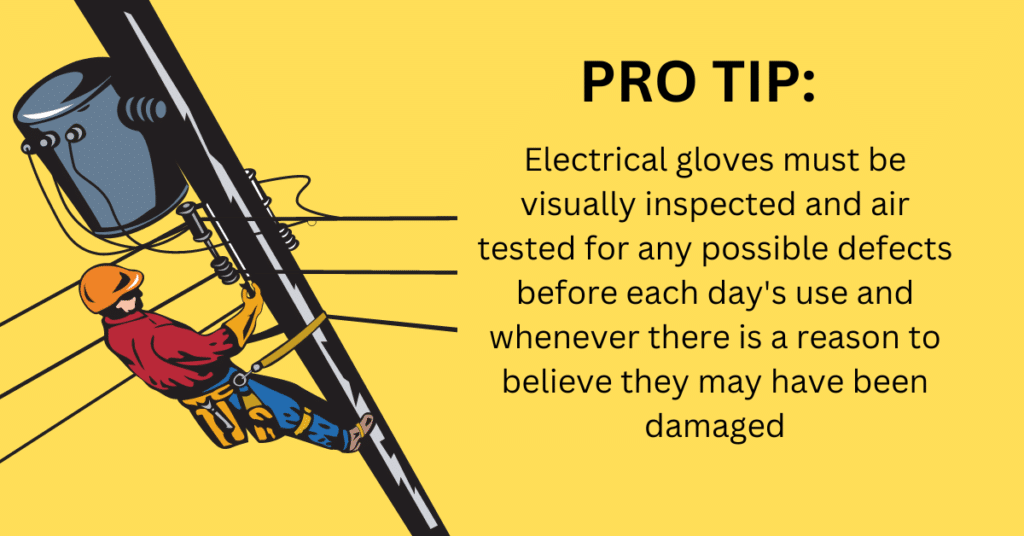
6. There were 93 heavy machinery caught-in/between incidents in 2021
Source: BLS.com
7. In 2018, there were 156 workers struck by object or equipment
Source: BLS.gov
Hazards in Construction
In construction, where hard work shapes progress, contractors face a constant challenge—Hazards.
These aren’t just problems; they’re the real issues on our job sites.
From loud machines to tricky scaffolding, our workplaces are full of risks.
Spotting hazards saves lives in the construction world.
So, put on your hard hat because dealing with dangers isn’t just a must—it’s how contractors get things done.
Let’s dive into the details of construction hazards and learn how to keep projects safe and sound.
8. There were 428,700 workers affected by respiratory hazards in 2021
Source: BLS.gov
9. There were 31,820 OSHA inspections of jobsites in 2022
Source: OSHA.gov
SOURCE: OSHA
10. Only 31.7% of workers wore PPE In the field in 2022
Source: BLS.com
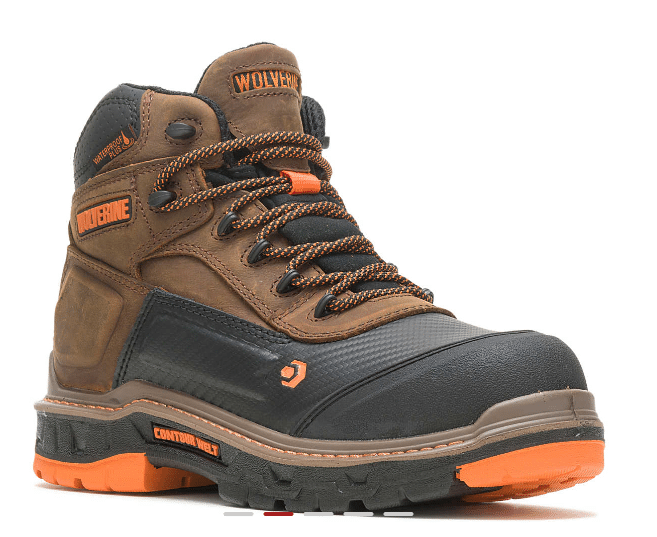
Construction Boots for Contractors
Do you need construction boots for your next day at work? Check out our Top 5 recommendations!
11. 551 workers were affected by hazardous materials from 2021
Source: BLS.gov
12. 370 workers affected by noise hazards in construction from 2021-2022
Source: BLS.gov
13. 272,780 workers were affected by musculoskeletal disorders in 2018
Source: BLS.gov
14. 73,880 workers were injured 2021-2022 due to handheld objections or machinery
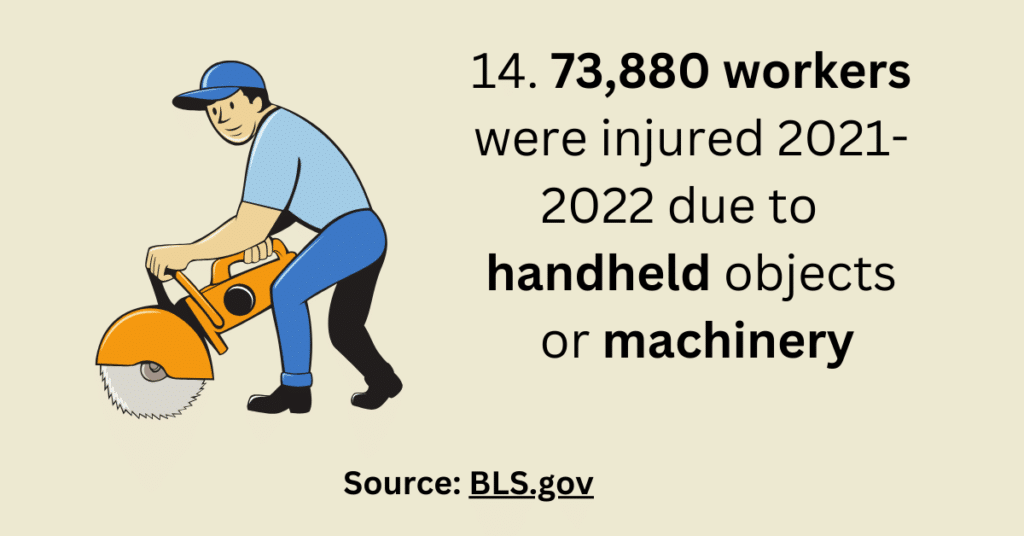
15. 11 workers died due to heat-related exposure in 2016
Source: MGA
16. 600 workers were affected by lead, copper, nickel and zinc exposure from 2021-2022
Source: BLS.gov
17. 680 workers were affected by welding hazards from 2021-2022
Source: BLS.gov
18. 15% of all construction workers in the United States have a substance abuse disorder compared to 8.6% of the general population of adults
Source: Americanadditioncenters.org
19. Chemical burns and corrosions accounted for 7,348 incidents from 2021-2022
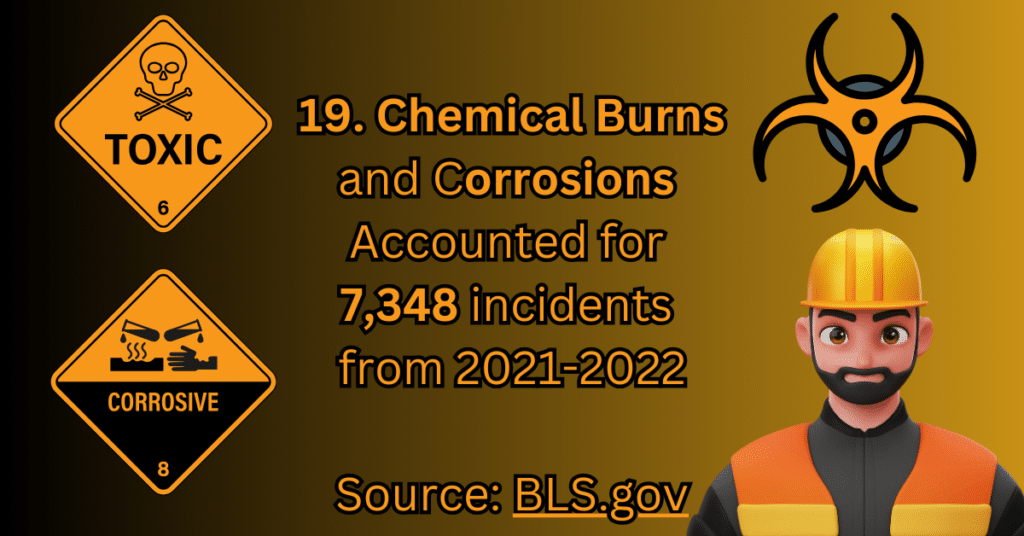
Safety Measures and Compliance
Safety measures and compliance are the cornerstones of a resilient and responsible construction industry.
In the fluid world of construction, where risks are inherent, prioritizing the well-being of workers and adhering to stringent safety standards is not just a regulatory obligation but a fundamental commitment.
From comprehensive risk assessments to meticulously implementing personal protective equipment (PPE) protocols, ensuring a safe working environment is paramount.
Compliance with industry regulations, encompassing building codes, environmental standards, and occupational health and safety guidelines, is not merely a legal requirement but a pledge to uphold the highest standards of construction excellence.
Below are protocols, rules, and new technological breakthroughs that play a critical role in shaping the construction industry’s current safety measures and compliance standards.
20. Building Code Sect. 26-252 b – a sign is required listing the name, address and phone number of the permit holder and the permit expiration date
Source: NYC DOB
21. The value of IoT in the construction market will grow from $8,179.9 million to $19,089.8 million by 2027.
Source: GoCodes
22. 92% of construction companies said they were using or intend to use AI.
Source: www.constructiondive.com
23. Compliance with the lockout/ tagout standard prevents an estimated 120 fatalities and 50,000 injuries each year
Source: OSHA
24. 7,480 workers were affected by chemical exposure from 2021-2022
Source: BLS.gov
25. Failure to Notify
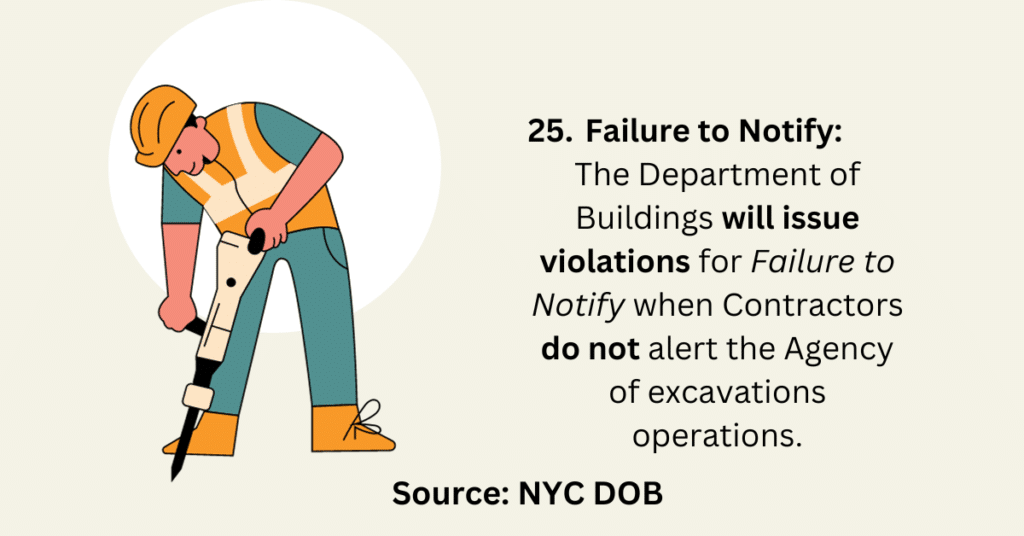
26. Proper fall protection is required when workers are at a height of 6 feet or more
Source: OSHA
27. Approved portable fire extinguishers must be available on floors where combustible materials or liquids are stored, combustible waste is being generated and at the entrance of each storage and construction shed. NYC Fire Code §1415.1
Source: NYC DOB
28. Open fires are illegal on construction sites. NYC Fire Code §1404.3
Source: NYC DOB
29. DOB Work Permits are required for most work, including underpinning. The work must meet the approved plans
Source: NYC DOB
30. Building Code Sect. 27-1009 (c) – a sign is required listing the name, address and phone number of the property owner and the general contractor
Source: NYC DOB
31. Chapter 8 of Title 1 – Sect. 8-01 (d) (1) – a sign is required listing the name, address and phone number of the demolition contractor and the Department of Buildings complaint number – 311
Source: NYC DOB
32. Safety committees are not required for private sector entities; however, N.Y. Comp. Codes R. & Regs. tit. 11, § 153.7 provides that employers participating in group dividend insurance plans (or quasigroup plans) must establish a safety committee to monitor progress and problems in implementing their accident prevention and loss reduction plan.
Source: OSHA
33. Weekly Construction Inspections
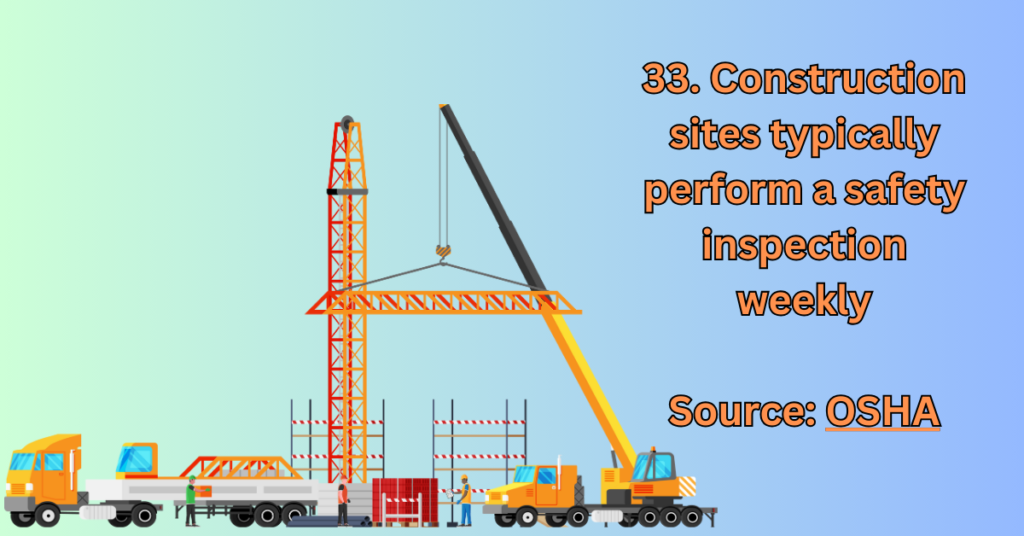
Safety Reporting and Response
Safety Reporting and Response are pivotal for construction workers’ well-being and project success.
Accurate and timely reporting is crucial for identifying hazards, assessing risks, and implementing preventive measures.
Robust safety reporting systems collect valuable data, allowing analysis of trends and patterns for a proactive safety approach.
Equally crucial is the responsive aspect of safety protocols, ensuring swift and effective measures in case of incidents.
This includes immediate medical attention, thorough investigations, and corrective actions to prevent recurrence.
Prioritizing Safety Reporting and Response safeguards the workforce and fosters a culture of accountability and continuous improvement.
By integrating these elements, we fortify safety practices, enhancing overall construction industry standards.
34. More than 25% of contractors don’t report a work-related injury
Source: CPWR
35. The level of near misses reported continues to climb to a current level of about 230 near misses per week
Source: aeasseincludes.assp.org
Specific Construction Types
Residential and commercial construction safety considerations differ primarily in scale, complexity, and regulatory requirements.
In residential construction, the focus is on individual homes with a smaller workforce and simpler structures.
Common safety concerns include falls, electrical hazards, and proper use of tools. On the other hand, commercial construction involves larger and more intricate projects, such as office buildings or shopping centers, often requiring a larger and more diverse workforce.
Safety in commercial construction emphasizes coordination among multiple contractors, heightened structural and fire safety measures, and compliance with more extensive regulations due to these spaces’ increased occupancy and public nature.
Both sectors prioritize worker well-being and adherence to safety protocols, but the nature and scope of potential risks differ, necessitating tailored safety programs for each context.
2010-2012 Construction Deaths By Sector by Jeffrey CalderonSource: Associated General Contractors of America
36. Industrial project locations experienced the highest number of fatalities at 35% between 2010-2012
37. Residential project locations accounted for 25% of deaths from 2010-2012
38. Residential project locations accounted for 5% of deaths from 2010-2012
39. Residential project locations accounted for 29% of deaths from 2010-2012
Unique Safety Considerations
Unique safety considerations in construction encompass a range of factors that go beyond the general precautions.
Working at heights introduces the risk of falls, necessitating stringent fall protection measures such as guardrails, safety nets, or personal fall arrest systems.
Excavation and trenching pose the dangers of cave-ins, demanding proper shoring or protective systems. Heavy machinery operation requires specialized training and vigilance to prevent accidents.
Hazardous materials management is crucial, ensuring proper storage, handling, and disposal to mitigate health risks.
Additionally, construction sites often involve multiple contractors and trades working concurrently, necessitating effective communication and coordination to prevent clashes and enhance overall safety.
Weather conditions can also play a significant role, with extreme temperatures, wind, or precipitation requiring specific precautions. Addressing these unique considerations demands a comprehensive safety plan, ongoing training, and a commitment to fostering a safety culture within the construction industry.
40. There were 270 excavation or trench collapses in 2021
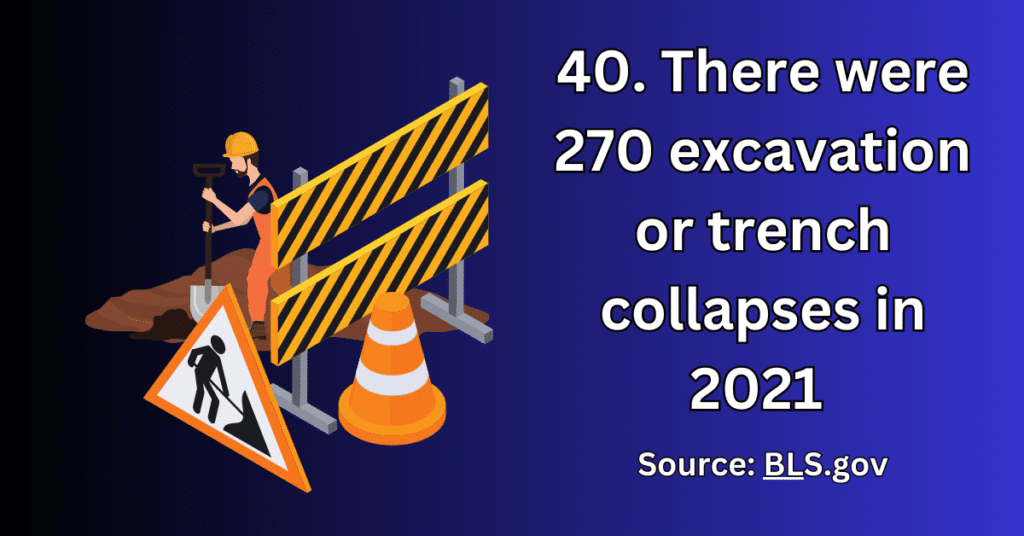
Additional Resources
Occupational Safety and Health Administration (OSHA)
Construction Safety Council
National Institute for Occupational Safety and Health (NIOSH) – Construction
International Safety Equipment Association (ISEA)
Recommended Reads on Construction Safety
Construction Safety and Health Management by David L. Goetsch
Building Construction: Principles, Materials, and Systems by Madan L. Mehta and Walter Scarborough
Site Safety Management by Thomas D. Schneid
Safety Professional’s Reference and Study Guide by W. David Yates
Conclusion
It is imperative to recognize construction safety is not merely a moral obligation but a strategic necessity for the industry’s sustained growth and prosperity. These should not come at the cost of a worker’s life.
The role of data and statistics in shaping the construction landscape cannot be overstated. It serves as the compass guiding us toward safer practices, informed decision-making, and continual improvement.
As we reflect on the implications of these construction statistics, it becomes abundantly clear that a proactive approach to safety, guided by the data acquired, is the key to mitigating risks and fostering a culture of well-being.
These alarming statistics should cause pause for concern for the stakeholders, design professionals, and construction workers building our future cities.
Through collective commitment and steadfast adherence to best practices, we can construct a future where construction sites are not just spaces for development but havens of security for all involved.
Frequently Asked Questions
Why are construction safety statistics important?
Construction safety statistics provide crucial insights into the industry’s current state, helping identify trends, potential hazards, and areas for improvement. Analyzing these statistics is key to enhancing safety protocols and preventing accidents on construction sites.
What are the common causes of accidents on construction sites?
Common causes include falls, struck-by incidents, electrical accidents, and caught-in/between incidents. Construction safety statistics help pinpoint these trends, allowing for targeted prevention strategies.
Are construction sites becoming safer over time?
Construction safety statistics indicate a positive trend over the years, thanks to advancements in safety regulations, technology, and increased awareness. However, challenges persist, making ongoing efforts crucial for further improvement.
How are construction safety statistics collected?
Data is typically collected through incident reports, inspections, and regulatory agencies. Government bodies, industry organizations, and construction companies contribute to databases that compile information on accidents, injuries, and fatalities.
How can construction safety statistics be used to improve workplace safety?
By analyzing statistics, industry stakeholders can identify high-risk activities, implement targeted safety training, and invest in better safety equipment. Proactive measures based on data analysis can prevent accidents and save lives.
How can workers contribute to improving construction safety statistics?
Workers can contribute by adhering to safety protocols, reporting hazards promptly, and actively participating in safety training programs. A safety-conscious workforce is instrumental in maintaining a secure construction environment.





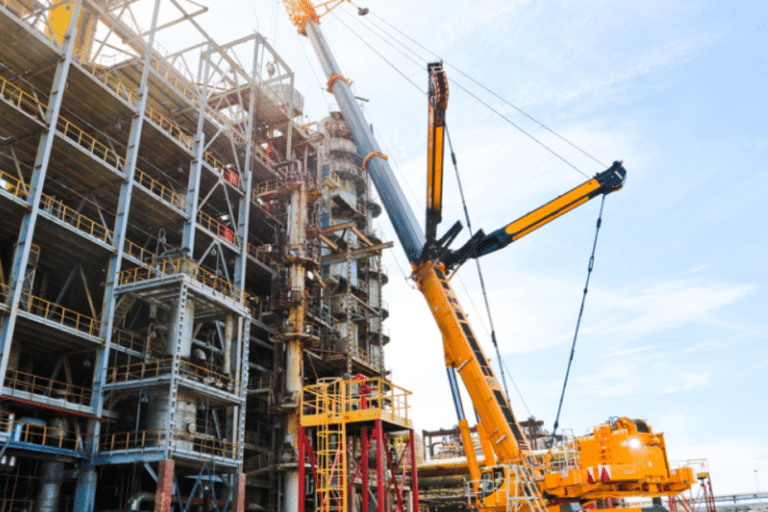


3 Comments
Comments are closed.